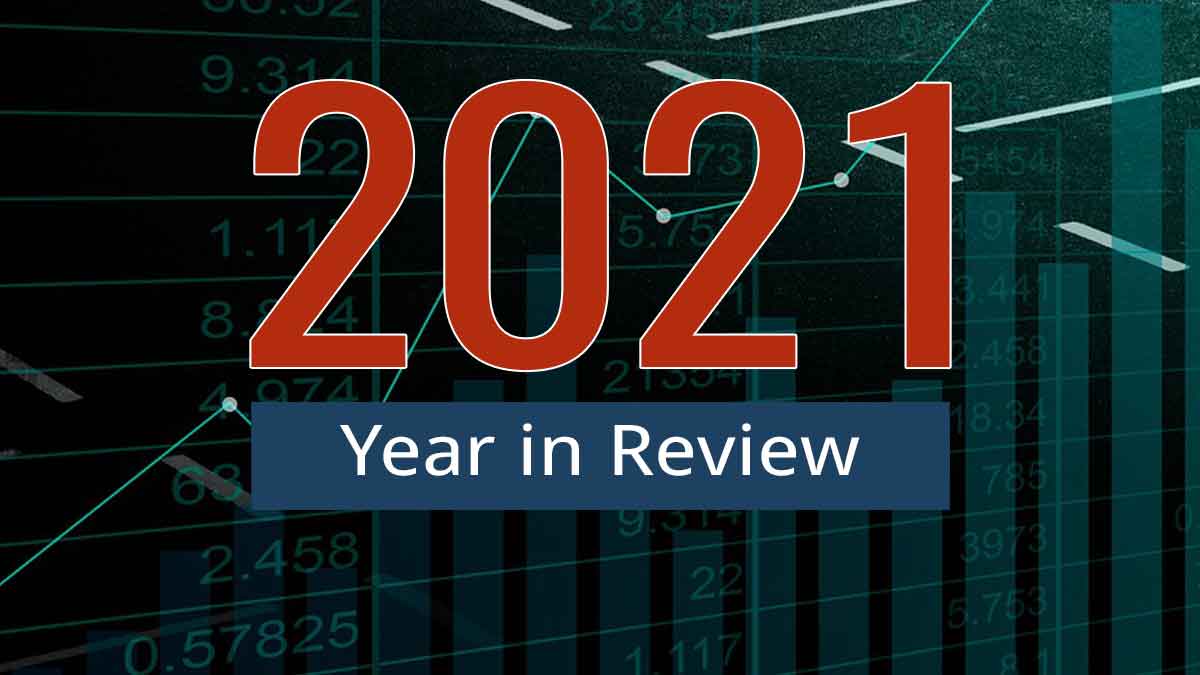For investors, 2021 was much like 2020 – another year like no other. The big difference: with vaccination rates rising, the world is learning to live with Covid-19 and realizing that uncertainty is the new normal. That’s why stocks rebounded faster after each pandemic-related dip. It’s playing out in real time with the Omicron variant: quick decline, rapid recovery, potential new high.
Throughout the year, far from shying away from investing, many people put excess savings (i.e, the money they weren’t spending on travel, restaurants, and more) to work. This is certainly what I saw from my own clients, who took advantage of any pullbacks in the market to buy good quality stocks at a discount.
Another big theme that carried over from 2020 and was reinforced in 2021 is the uneven impact of the pandemic on Main Street versus Bay Street. The volatility and hardships created by lockdowns were felt most sharply by small, private businesses while large, publicly traded companies that dominate the exchanges fared far better. Add in the fact that markets are forward-looking, reflecting a post-Covid world, and it becomes easier to understand why the markets are on track to end the year having achieved double digit growth – just like 2020.
This doesn’t mean larger companies and sectors didn’t have challenges. At the start of the year when people were still largely staying put, stay-at-home stocks such as Peloton, Zoom and Netflix were up while tourism and travel stocks such as Delta airlines, Airbnb and Expedia were down. In the second half of the year, as lockdown restrictions were lifted and vaccination rates increased, there was a reversal of fortune for all of these companies. Today, stay-at-home stocks are down and reopening stocks are up.1
Throughout the year, global supply chain constraints were a big topic in the media and in boardrooms. Goldman Sachs went on the record drawing a direct line between supply chain bottlenecks and inflationary pressures (the firm estimates 80% of the rise in inflation rates is the result of supply chain issues2). It should come as no surprise that Covid-19 was the cause for those issues as shutdowns and safety protocols strained operations.
Speaking of strained operations, labour shortages persist as a hot topic. In August in the U.S. more than 4.3 million people opted out of the workforce, according to the U.S. Labor Department.3 In November in Canada, the economy hit near full employment, according to Statistics Canada.4 In both countries, businesses are left scrambling to fill job openings.
In 2021, the tech sector, the biggest component of the Standard & Poor’s 500 index, assumed the role of stabilizer. While in the past, tech stocks were almost solely viewed in terms of high risk/high growth, the sector has emerged as a safe place to protect wealth. For example, when the markets deflated in 2020, technology did not fall as much as other sectors and it was the first to rebound when markets recovered. Bottom line: tech stocks have served the average investor very well throughout the pandemic.
It’s a different story for healthcare stocks, which experienced huge swings throughout 2020 and 2021, with big pharma moving up and down based on pandemic news of the day.
Maybe the most thought-provoking development of the year was the rise of the Reddit investor and social media meme stocks.5 Perhaps for the first time, we were able to see the power of average retail investors to influence the markets when they come together to orchestrate buying and selling campaigns.
In 2021, cryptocurrencies showed us they are here to stay. However, they are highly volatile. On December 4, 2021 a Saturday, Reuters reported a billion-dollar selloff across all cryptocurrencies, with Bitcoin losing a fifth of its value.6
So what does it all mean? Here are three lessons investors can take from 2021:
● If someone tells you, this period in time is different, don’t believe it. There will always be some new, next challenge or uncertainty. We now know we can adapt to just about anything and emerge stronger – and so can the markets.
● This is exactly why trying to time the markets does not work. There is no exact “right” time to get in or leave the market. If you have money to invest, go out and buy the best quality investments available.
● Have a plan and stay focused on the long term. Don’t deviate and get distracted by the latest news story or trend. Sometimes you’ll miss an opportunity, but over the long term, you will win more than you will lose.
This year was certainly a win for those of us who followed these lessons and stayed invested. Looking to 2022, I expect more volatility as a result of a tapering off of stimulus spending and higher interest rates. We’ll also likely see a return to single digit growth rates in the 6% to 9% range for the markets. So, curb your expectations, at least a little bit, and get ready for the ride. Happy Holidays!
Call Me or Email Me
My approach to investing is straightforward. I study the markets, global economies and what’s happening within industries to be in a position to best help my clients find good quality investments that will help them meet their goals. I build custom portfolios for each client. I welcome you to call me at 416-332-3863 or email me at allan@allansmall.com.
References
-
-
- Travel stocks rally, stay-at-home companies plunge as pandemic wanes and tourism rebounds, CNBC
- Biden announces 24/7 L.A. port operations to ease supply chain jams, CBC
- A record 4.3 million workers quit their jobs in August, led by food and retail industries, CNBC
- Canada’s job market blows past estimates quadrupling gains, Al Jazeera
- 8 Reddit Stocks Trending in December, US News
- Bitcoin falls by a fifth, cryptos see $1 billion worth liquidated, Reuters
-

